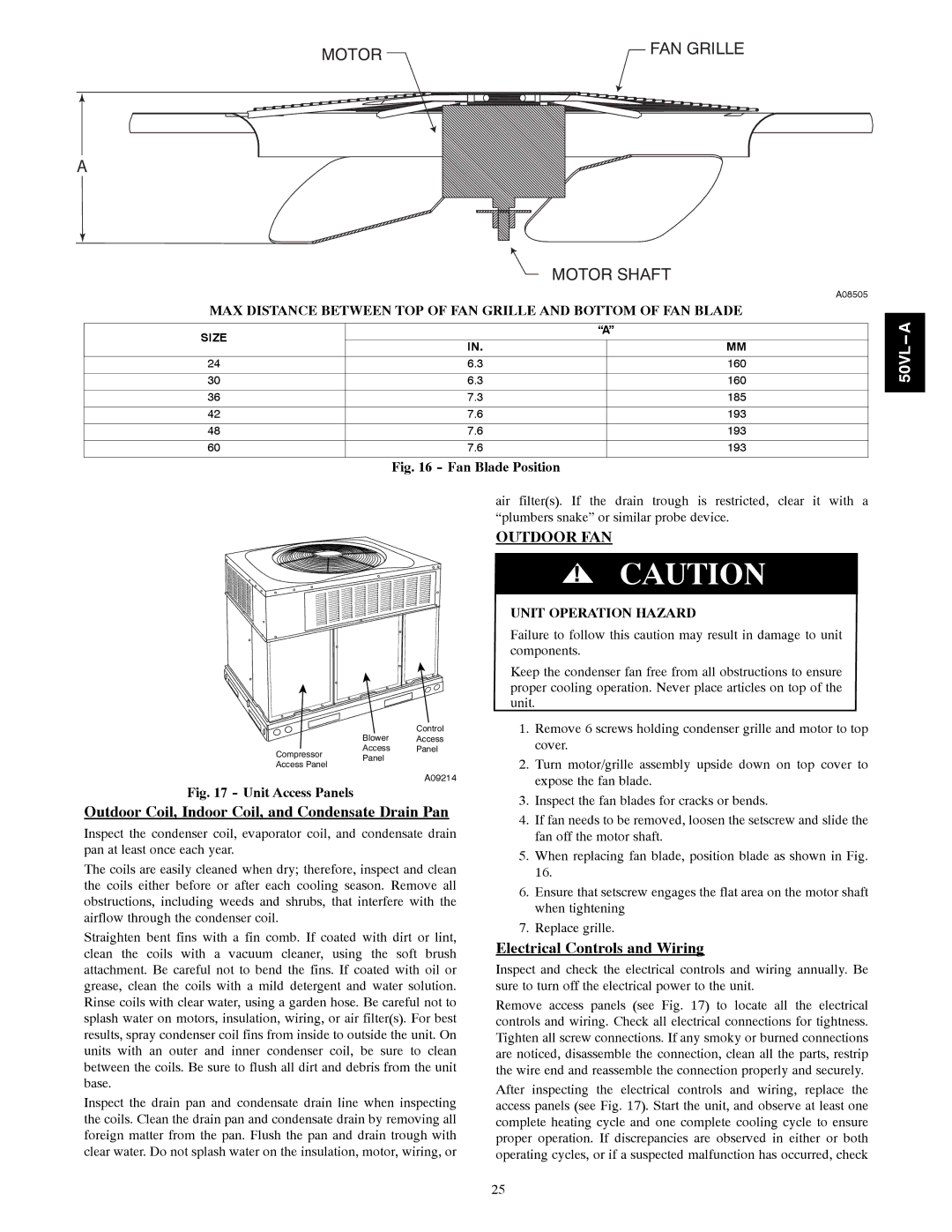50VL---A specifications
The Carrier 50VL---A is a powerhouse in the field of air conditioning and heating solutions, designed for residential and commercial applications. This unit exemplifies Carrier’s commitment to efficiency, reliability, and advanced technology. One of the standout features of the 50VL---A is its superior energy efficiency, which is reflected in its high Seasonal Energy Efficiency Ratio (SEER) and Heating Seasonal Performance Factor (HSPF) ratings. These ratings ensure reduced energy consumption and lower utility bills, making it an environmentally friendly choice.The 50VL---A is designed with a robust scroll compressor that not only enhances performance but also minimizes noise levels during operation. This compressor is integral to the system’s ability to maintain a consistent temperature and humidity level within the space. The unit’s sound-dampening features contribute to a quieter environment, which is particularly important in residential settings.
One of the key technologies integrated into the Carrier 50VL---A is the advanced microprocessor control system. This technology allows for precise temperature adjustments and operational diagnostics, making maintenance easier and more efficient. This system ensures that the unit operates at optimal performance, adapting to changing environmental conditions with ease.
Moreover, the 50VL---A is equipped with a multi-speed blower motor that provides enhanced airflow and comfort. This feature allows users to select different cooling or heating levels according to their specific requirements, promoting customized comfort throughout the home or office.
In addition to its performance capabilities, the Carrier 50VL---A is also built with longevity and durability in mind. The cabinet is constructed from high-quality materials that offer resistance to corrosion and wear, ensuring the unit can withstand various weather conditions over time. Furthermore, the unit’s maintenance-friendly design allows for easy access to key components, simplifying servicing and prolonging the life of the system.
Overall, the Carrier 50VL---A stands out as a reliable and advanced solution for climate control. With its energy-efficient operation, quiet performance, and user-friendly features, it represents a significant investment in home comfort and efficiency. Whether for heating during the colder months or cooling in the summer, the 50VL---A delivers exceptional performance, making it a popular choice among users seeking quality HVAC solutions.

